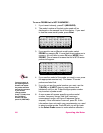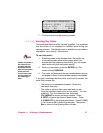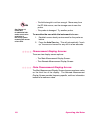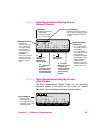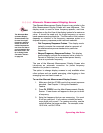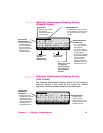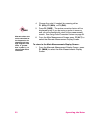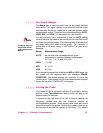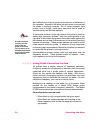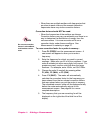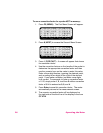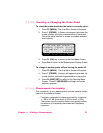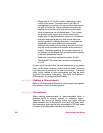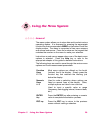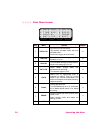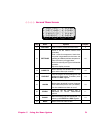
24 Operating the Meter
get a deflection on the bar graph but the amount of deflection is
not important. Repeat for the other two test points to insure that
the probe is working correctly. The D series magnetic field
probes have a single, conductive test point that is used to
simultaneously test all three sensors.
A microwave window on the right side of the probe is used for
testing high frequency probes. Hold the probe parallel to the
right side of the meter and position the probe head against the
test window so that one of three arrows on the probe is pointing
towards the window. These arrows indicate the location of the
three sensors inside the probe. A deflection of any magnitude
on the bar graph is acceptable. Repeat for the other two sensors
to insure that the probe is working correctly.
Ultra-broadband probes contain both high frequency and low
frequency sensors. These probes require six checks – three
high frequency and three low frequency.
Using Probe Correction Factors
All probes have a certain amount of frequency sensitivity.
Frequency sensitivity is the amount of deviation from the correct
measured value that a probe yields at various frequencies.
Obviously, the smaller the deviation, the better. But since a
certain amount of frequency deviation is unavoidable, the more
frequencies that you calibrate the probe at, the better. At each
calibration frequency, you have a correction factor.
Multiplying the reading on the meter by a correction factor
marked on the handle of a Narda 8700 Series probe
compensates for the probe’s frequency sensitivity. The Model
8718B is unique because it can perform this task automatically.
Correction factors can be used:
•
When there is only a single emitter being surveyed.
•
When there are multiple emitters all operating at the
same frequency (this is often the case with industrial
equipment).
A probe that does
not show a move
-
ment of the bar
graph for all three
(or six) tests may be
damaged and should
not be used to make
measurements.
Note



